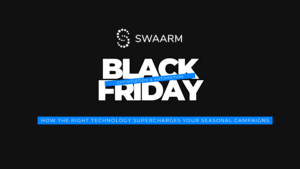Having a grasp of advertising history will help get you to grips with what a supply side platform (SSP) is. Once upon a time, during the exodus from print to digital media, publishers looked for new revenue sources. Back then, display advertising rescued the industry as it mimicked printed ads and allowed websites to monetize their content to generate a steady income flow.
Today, advertisers are always on the lookout for publishers that can present their content to their target audience. By the end of 2022, the ad spending of companies in the US is estimated to reach $616 billion. In 2020, conversely, the total amount spent on advertisements by businesses in the digital advertising market was $404.23 billion.
With the steady increase in investment in this area, marketers and advertisers need to understand how SSPs work.
What is a supply side platform (SSP)? A brief history of how it all started
Photo by Austin Distel on Unsplash
In the beginning, publishers sold ad spaces on websites through direct sales, and finding advertisers interested in running their ads was easy. This method wasn’t always advantageous to publishers, as they often had unsold ad spaces and inventory. As a result, they needed the assistance of a technological platform that could sell their ad inventories more efficiently using automation.
An ad network is a technology platform that operates as a broker between multiple advertisers and publishers. As these technology platforms evolved, newer options came into existence. Network optimizers also came into the picture. AdTech platforms help publishers by identifying ad networks that work more efficiently and perform well. These platforms also sold publishers’ inventory for the best price possible.
Real-time bidding (RTB) came out in the 2000s. Network optimizers then evolved into a new AdTech platform known as supply side platforms (SSPs). Today, SSPs allow publishers to sell their ad inventory at the best price possible and are integral to the RTB process. They permit publishers to optimize yield by connecting their ad inventory to demand side platforms and multiple ad exchanges.
In a nutshell, an SSP or supply side platform is an AdTech or advertising technology platform. Publishers use it to sell, manage and optimize their ad inventory. These ad spaces might be on their mobile apps or their websites. Using an SSP, they can do the tasks mentioned above in a more efficient and automated manner.
Supply side platforms have evolved a lot over the last few years and now boast greater functionality. Nowadays, ad exchange mechanisms enable publishers to deal directly with demand side platforms (DSP). As a result, there is no need for ad exchange.
Where do SSPs fit in the advertising ecosystem?
SSPs are crucial in RTB media transactions and the online advertising ecosystem. They connect to various ad networks, ad exchanges, demand-side platforms, and data management platforms (DMPs). Supply side platforms are crucial because they help sell ad space or inventory for the publishers (app or website owners) for the best price possible.
The programmatic advertising buying process is complex, especially for publishers handling multiple ad networks. There are various restrictions and requirements that they need to learn. If publishers have to undertake this task manually, it can be time-consuming. Conversely, all of these elements are managed by SSPs seamlessly.
Here is a list of some crucial automatic requirements and processes that SSPs handle:
- Real-time bidding transactions: They sell the publishers’ ad inventory to demand-side platforms (DSPs) through ad exchanges.
- Ad-network optimization: Different ad networks are ready to buy the ad space, but their requirements may be different. For example, some ad networks may be ready to pay a cost per mile (CPM) of $3, but they may only fill 25% of the time. And some ad networks might pay a CPM of $1.50, but they will be ready to fill in the space 80% of the time. Some ad networks may pay a CPM of 60¢, but they might be the ones that fill the space 100% of the time. SSPs can quickly calculate and determine which ad network to pick or proceed to do the transaction based on historical data.
Photo by Brooke Cagle on Unsplash
- Impressions coming from a specific geographical area: Some ad networks want the impressions on their ads to generate from a particular geographical location. SSPs assist publishers by allowing them to pick relevant ad networks rather than connecting to random ad networks.
- Frequency Capping: DSPs and SSPs usually sync and then match cookies to drive frequency capping. Frequency capping is the process of recording the number of times an ad appears to a specific website visitor. Using the available information, the number of times an ad shows up to a website visitor is limited or restricted. This restriction applies to all those websites that are part of a campaign in the DSP that serves ads.
- Picking the best ad networks: The ad networks that SSPs select consistently deliver the best level of latency. As a result, it can improve the overall RTB process.
Supply side platforms help publishers by handling all the above elements. They pick the best ad networks to bring in the highest effective yield, and they also can streamline both the displaying and ad-buying process. By limiting the latency and increasing the yield, they can remove the burden from the ad-operations teams.
Advantages of Supply side platforms (SSP)
Here are some of the main benefits of using supply side platforms:
Selling inventory automatically
By using SSPs, publishers remove manual work from their sales process. They can sell the inventory to advertisers, including video, display, and native ad space on mobile and desktop devices.
Since SSPs work on machines, publishers of any size can use them to sell ad inventory. It can sell as little as ten impressions on a small website or mobile app to millions of impressions on a larger website or app. However, some supply side platforms may require a specific number of impressions before publishers can use their platform.
Reports
Publishers can download reports from SSPs that detail who is bidding and how much advertisers or ad networks spend to purchase ad inventory. This information helps publishers understand the ad space they have on their app or website, allowing them to make better, well-informed decisions.
Work with various networks with ease
Publishers usually drop inventory prices if they cannot find more buyers or advertisers, but if they use SSPs, they never have to worry about cutting their rates. Since SSPs connect to various networks, DSPs, and ad exchanges, a greater number of buyers can become part of the real time bidding process. Supply side platforms can assist in helping publishers get the best yield possible.
In conclusion
Supply side platforms (SSPs) are ad tech or advertising technology platforms. They assist publishers in selling off the ad space or inventory they have more efficiently and for the best possible rate.
Since it is an automation system, no manual labor is required. When they use an SSP, publishers can enjoy multiple benefits. For publishers, working with different ad networks also becomes a lot easier.






